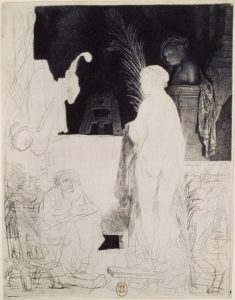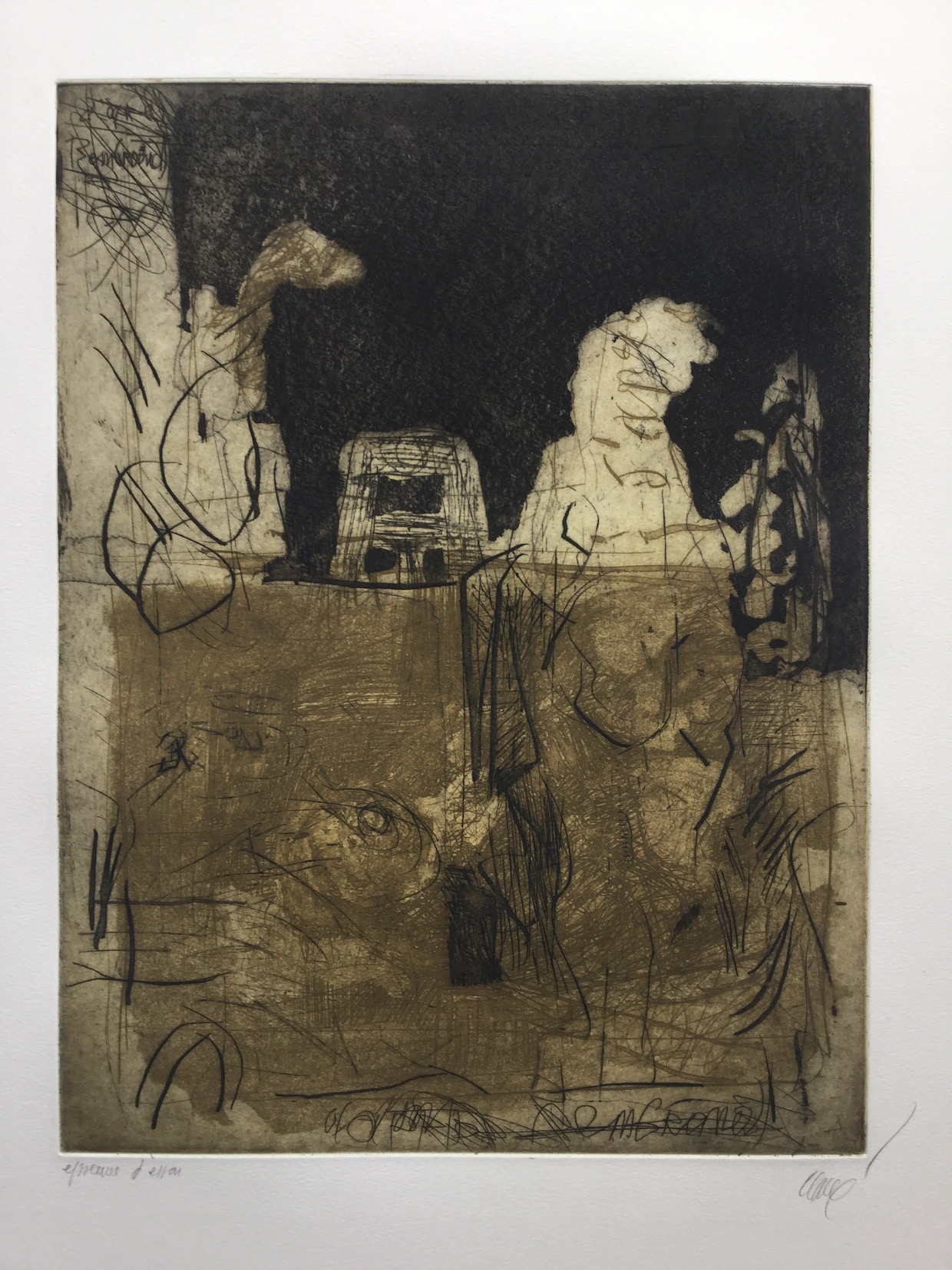In 1965 in Barcelona, the Catalan painter and engraver Vila-Casas initiates Clavé into engraving. Clavé uses copper or zinc plates, and also learns about aquatint. Etching and aquatint are indirect engraving processes: the acid attacks the exposed metal, while tools are used in line-engraving and intaglio-engraving. These two types of processes are based on the same idea, even though the techniques used are distinct. With etching or aquatint, the metal plate is first covered with a protective varnish, and then the artist draws with a scribe hence removing parts of the varnish. The plate is later sprayed with acid (etching), which bites unvarnished parts of the plate. Acid “digs” and draws the image. Artists such as Lucas de Leyde and Jacques Callot were using acid to engrave from the Sixteenth century on, and so were numerous painters from the Seventeenth century on. Among these famous painters-engravers, Rembrandt created around 300 prints. He mastered the etching process and inspired greatly Goya, Delacroix, Degas and Picasso.

Rembrandt « L’Artiste dessinant d’après le modèle » vers 1639 – Etching, etching point and burin © BnF
Clavé is also one of these artists fascinated by Rembrandt, and pays tribute to him on several occasions. In 1966, Clavé works on the feminine nude, a rare theme in Rembrandt’s works (he only created around 10 prints about this subject in total). Clavé almost eliminates all objects other than the female body, which is seen from the back and features exaggerated curves.
In a way, Clavé doesn’t eliminate the objects, rather, he “erases” (in the sense that he covers) the subject engraved by Rembrandt, who titled his work L’Artiste dessinant d’après son modèle. He subtly works on the different shades of black and tries to improve the engraving by presenting its successive stages, which is quite rare in his Œuvre. For him, these stages are rather printed out as “épreuve d’essai” (trial proof) so that he knows his creation process points towards the right direction. The engraving above is one of these “épreuve d’essai”. The reading lists are blurred and Clavé effaces his own presence for the benefit of the Dutch Master, now embodying “le modèle”. More than a dedication, it is to some extent a love declaration.

